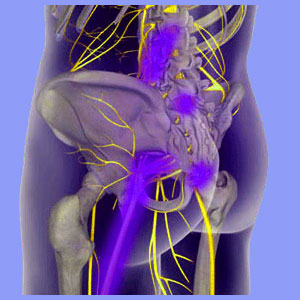
The neurological effects of sciatica can be just as bad as the actual pain, if not exponentially worse. Neurological symptoms might exist in addition to lower back and leg pain, or instead of simple pain. The most common of all nerve symptoms include paresthesia, weakness and numbness in areas of the body served by the sciatic nerve. Due to the regional importance of this nerve, these symptoms can basically strike almost anywhere in the lower body anatomy, including the buttocks, groin, legs and feet. However, there are other possible nerve-related symptoms that are less commonly expressed.
This essay takes a look at these rather atypical symptoms of sciatica, as well as investigates the usual and occasional causes of these sufferings.
Unusual Neurological Effects of Sciatica
Besides the aforementioned pain, burning, tingling, numbness and weakness that are so common in many sciatica patients, there are also symptoms that occur in a small minority of sufferers.
Foot drop occurs when a dorsiflexion deficit exists in one or both legs. This symptom describes a condition wherein the patient has a difficult time elevating the toes. Of course, this makes walking and normal ambulation very challenging and even impossible for some particularly unfortunate patients. Foot drop can be diagnosed by any physician, but should always be studied by a qualified neurologist, to ascertain the exact true cause of the problem. Trusting primary diagnosis to any other type of care provider is not generally advised.
Some patients suffer the inability to stand for long, or at all. This symptom is frightening and debilitating, preventing work and an independent life.
The least often seen symptoms of sciatica might include constipation, incontinence or sexual dysfunction. These horrific symptoms can affect men or women equally, adding tremendous mindbody stress to the symptomatic mix.
Causes of Neurological Sciatica Symptoms
Complete foot drop is usually caused by structural compression of the L5 nerve root. In some instances, L4 or S1 might be the culprit, especially in partial foot drop scenarios. Compression of a nerve can occur due to neuroforaminal stenosis in the lumbar spine or central spinal stenosis affecting one or more nerve roots in the cauda equina.
The inability to stand may also be related to cauda equina compression. However, many patients with lumbar stenosis are still not truly suffering from these normal degenerative changes that occur in the lower back. Instead, they might also be facing significant cervical spinal stenosis that is the actual cause of their symptoms.
Constipation, incontinence and sexual dysfunction are usually related to central stenosis in the lowest levels of the spinal canal and subsequent cauda equina syndrome. In the worst instances, the condition can become a medical emergency, necessitating immediate surgical correction to save nerve functionality from suffering permanent injury.
Horrific Neurological Effects of Sciatica
Sciatica is a nightmarish syndrome to endure. Its effects are easily seen on the body and can even be measured by nerve conduction testing and clinical correlation. However, far less considered are the psychological effects the patient must endure. These emotional burdens are no less damaging, and in fact, may be much worse than the pain itself.
Imagine not being able to walk correctly or being able stand at all. Imagine not being able to work or support yourself, or the loved ones who depend on you. Think about not being able to use the restroom easily, or worse yet, not being able to control your bladder or bowels. Imagine the devastating effects of sexual inability on your relationship. Now think of all these sufferings compounded by one another. This is the sad reality of daily life for so many patients.
If pain, tingling, numbness or weakness are your only symptoms, then count yourself lucky. Sure, things could always be better, but then again, they could also be far worse.
Sciatica > My Sciatica Story > Neurological Effects of Sciatica



